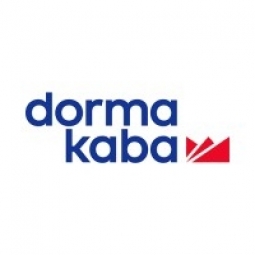公司规模
Large Corporate
地区
- America
国家
- United States
产品
- E-Plex E5051 Series
- Alarm Locks DL4100
技术栈
- Electronic Locks
- Privacy Cylindrical Lockset
实施规模
- Enterprise-wide Deployment
影响指标
- Cost Savings
- Productivity Improvements
技术
- 功能应用 - 远程监控系统
适用行业
- 零售
适用功能
- 设施管理
用例
- 楼宇自动化与控制
服务
- 系统集成
- 硬件设计与工程服务
关于客户
星巴克咖啡公司是一家跨国连锁咖啡店和烘焙店,总部位于华盛顿州西雅图。作为世界上最大的咖啡连锁店,星巴克被视为美国第二波咖啡文化的主要代表。该公司在全球 70 多个国家/地区经营着 30,000 多家门店。星巴克门店供应热饮和冷饮、全豆咖啡、微磨速溶咖啡(称为 VIA)、浓缩咖啡、咖啡拿铁、全叶茶和散叶茶(包括 Teavana 茶产品)、Evolution Fresh 果汁、星冰乐饮料、La Boulange 糕点以及薯片和饼干等小吃;一些产品(包括他们每年秋季推出的南瓜香料拿铁)是季节性的或特定于商店所在地的。
挑战
星巴克一直面临着确保员工和顾客使用卫生间安全的问题。在许多地方,非顾客和无家可归者会使用卫生间进行不当活动。机械钥匙卫生间锁的钥匙经常丢失或被盗,这就需要重新配锁芯或更换锁,以及对卫生间进行可能需要的任何维修。这使得在许多地方提供安全可靠的卫生间设施对星巴克来说是一项昂贵且不方便的提议。几年前,Alarm Locks DL4100 隐私圆柱形锁具被引入作为解决方案。然而,由于安装时间长、隐私按钮的可见性问题以及产品故障和操作员错误,它并没有解决问题或为星巴克节省成本。
解决方案
解决方案是 E-Plex E5051 产品。这款电子锁具有安装简便、门内无需电线、隐私使用无时间限制、具有 300 个服务代码功能的 1 级认证等特点,使其成为星巴克洗手间安全问题的完美解决方案。E5051 由 Open Door 的技术人员安装和编程。所有决策者的反馈都是它易于安装、编程和使用,耐用可靠。关于如何进行隐私操作的标牌经过重新设计,使其更适合使用率高的公共设施,这些设施必须解决多种语言和维护问题。该计划由 Clear Vision 经星巴克地区办事处批准采用,并开始了转变。
运营影响
数量效益

Case Study missing?
Start adding your own!
Register with your work email and create a new case study profile for your business.
相关案例.

Case Study
Improving Production Line Efficiency with Ethernet Micro RTU Controller
Moxa was asked to provide a connectivity solution for one of the world's leading cosmetics companies. This multinational corporation, with retail presence in 130 countries, 23 global braches, and over 66,000 employees, sought to improve the efficiency of their production process by migrating from manual monitoring to an automatic productivity monitoring system. The production line was being monitored by ABB Real-TPI, a factory information system that offers data collection and analysis to improve plant efficiency. Due to software limitations, the customer needed an OPC server and a corresponding I/O solution to collect data from additional sensor devices for the Real-TPI system. The goal is to enable the factory information system to more thoroughly collect data from every corner of the production line. This will improve its ability to measure Overall Equipment Effectiveness (OEE) and translate into increased production efficiencies. System Requirements • Instant status updates while still consuming minimal bandwidth to relieve strain on limited factory networks • Interoperable with ABB Real-TPI • Small form factor appropriate for deployment where space is scarce • Remote software management and configuration to simplify operations

Case Study
Digital Retail Security Solutions
Sennco wanted to help its retail customers increase sales and profits by developing an innovative alarm system as opposed to conventional connected alarms that are permanently tethered to display products. These traditional security systems were cumbersome and intrusive to the customer shopping experience. Additionally, they provided no useful data or analytics.

Case Study
How Sirqul’s IoT Platform is Crafting Carrefour’s New In-Store Experiences
Carrefour Taiwan’s goal is to be completely digital by end of 2018. Out-dated manual methods for analysis and assumptions limited Carrefour’s ability to change the customer experience and were void of real-time decision-making capabilities. Rather than relying solely on sales data, assumptions, and disparate systems, Carrefour Taiwan’s CEO led an initiative to find a connected IoT solution that could give the team the ability to make real-time changes and more informed decisions. Prior to implementing, Carrefour struggled to address their conversion rates and did not have the proper insights into the customer decision-making process nor how to make an immediate impact without losing customer confidence.

Case Study
Ensures Cold Milk in Your Supermarket
As of 2014, AK-Centralen has over 1,500 Danish supermarkets equipped, and utilizes 16 operators, and is open 24 hours a day, 365 days a year. AK-Centralen needed the ability to monitor the cooling alarms from around the country, 24 hours a day, 365 days a year. Each and every time the door to a milk cooler or a freezer does not close properly, an alarm goes off on a computer screen in a control building in southwestern Odense. This type of alarm will go off approximately 140,000 times per year, equating to roughly 400 alarms in a 24-hour period. Should an alarm go off, then there is only a limited amount of time to act before dairy products or frozen pizza must be disposed of, and this type of waste can quickly start to cost a supermarket a great deal of money.

Case Study
Supermarket Energy Savings
The client had previously deployed a one-meter-per-store monitoring program. Given the manner in which energy consumption changes with external temperature, hour of the day, day of week and month of year, a single meter solution lacked the ability to detect the difference between a true problem and a changing store environment. Most importantly, a single meter solution could never identify root cause of energy consumption changes. This approach never reduced the number of truck-rolls or man-hours required to find and resolve issues.








